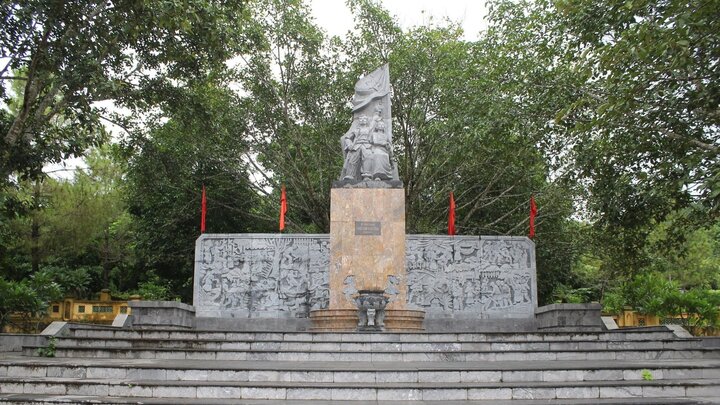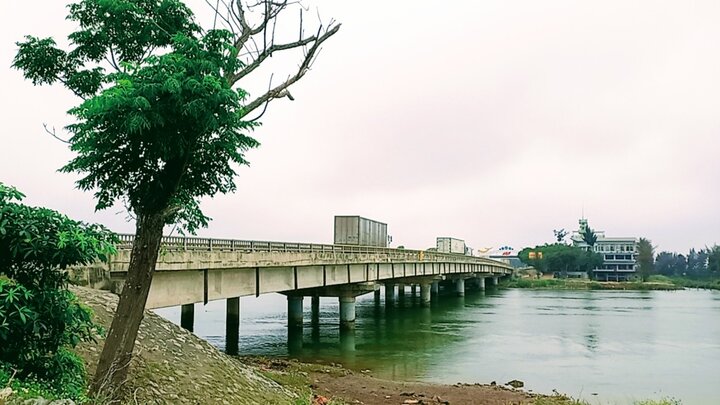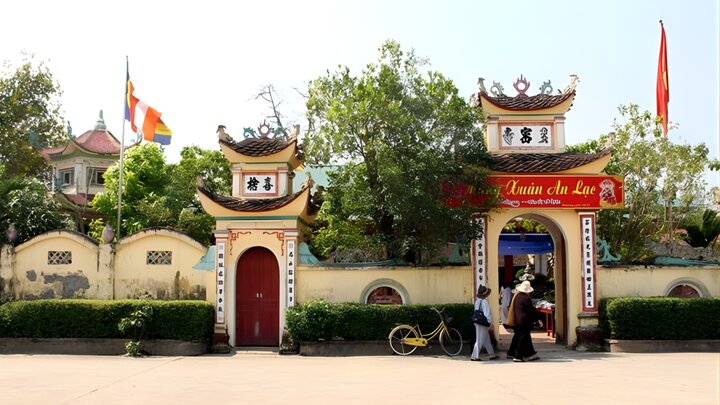1. Overview of the Nam Giao Altar of the Ho Dynasty
When setting foot in the ancient land of Tay Do (Western Capital), the Nam Giao Altar of the Ho Dynasty is like a vivid page of history, recreating the story of a dynasty whose reign, though not long, left a deep mark on the nation's history. This ceremonial structure was built in 1402 during the reign of King Ho Han Thuong, son of Ho Quy Ly, with the purpose of performing important rituals dedicated to heaven and earth.
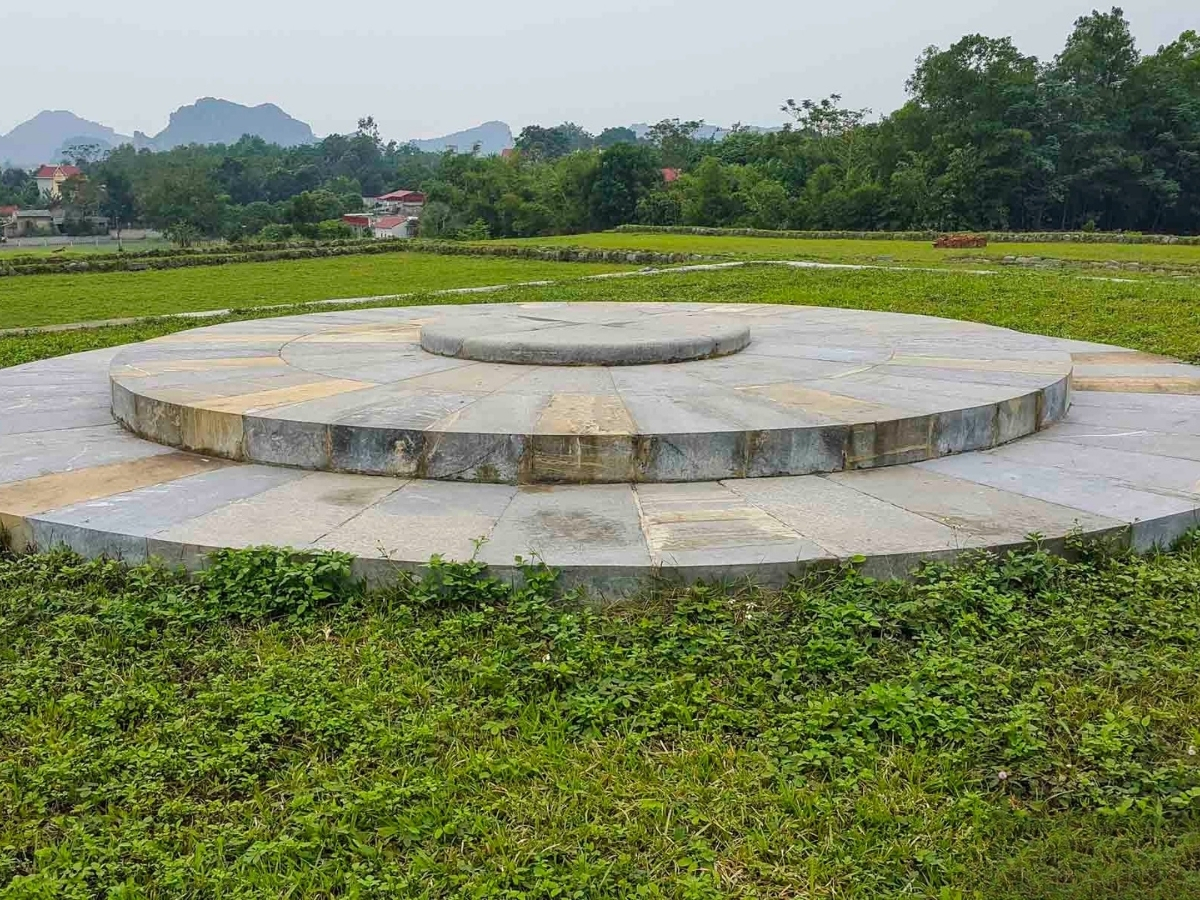
Close-up view of the Nam Giao Altar area of the Ho Dynasty. (Source: Collected)
Historical records in the Complete Annals of Đại Việt state: "In the year Nham Ngo (1402), the 8th month, Han Thuong ordered the construction of the Giao Altar at Mount Don Son to perform the Giao sacrifice ceremony", affirming the crucial position of the structure in establishing legitimacy and power for the new dynasty.
The Ho Dynasty Nam Giao Altar is one of the few ancient altars still well-preserved in Vietnam, converging archaeological, architectural, and historical values. As an inseparable part of the World Cultural Heritage complex of Ho Citadel, this structure is associated with the important rituals of the Ho dynasty, as well as a testament to the national consciousness, sovereignty, and the state organization capabilities of the Vietnamese people in the medieval period.
2. Transportation and Journey Experience
The trip to explore the Ho Dynasty Nam Giao Altar begins on a peaceful road winding through the lush green rice fields of Thanh Hoa province. Located in Vinh Loc commune, this relic is only about 2.5 km southeast of Ho Citadel, and about 45 km from Thanh Hoa city center along National Highway 45. Starting from Thanh Hoa city center, visitors can choose cars or motorbikes, travel along National Highway 45, then turn onto village roads leading to the relic nestled at the foot of Mount Don Son.
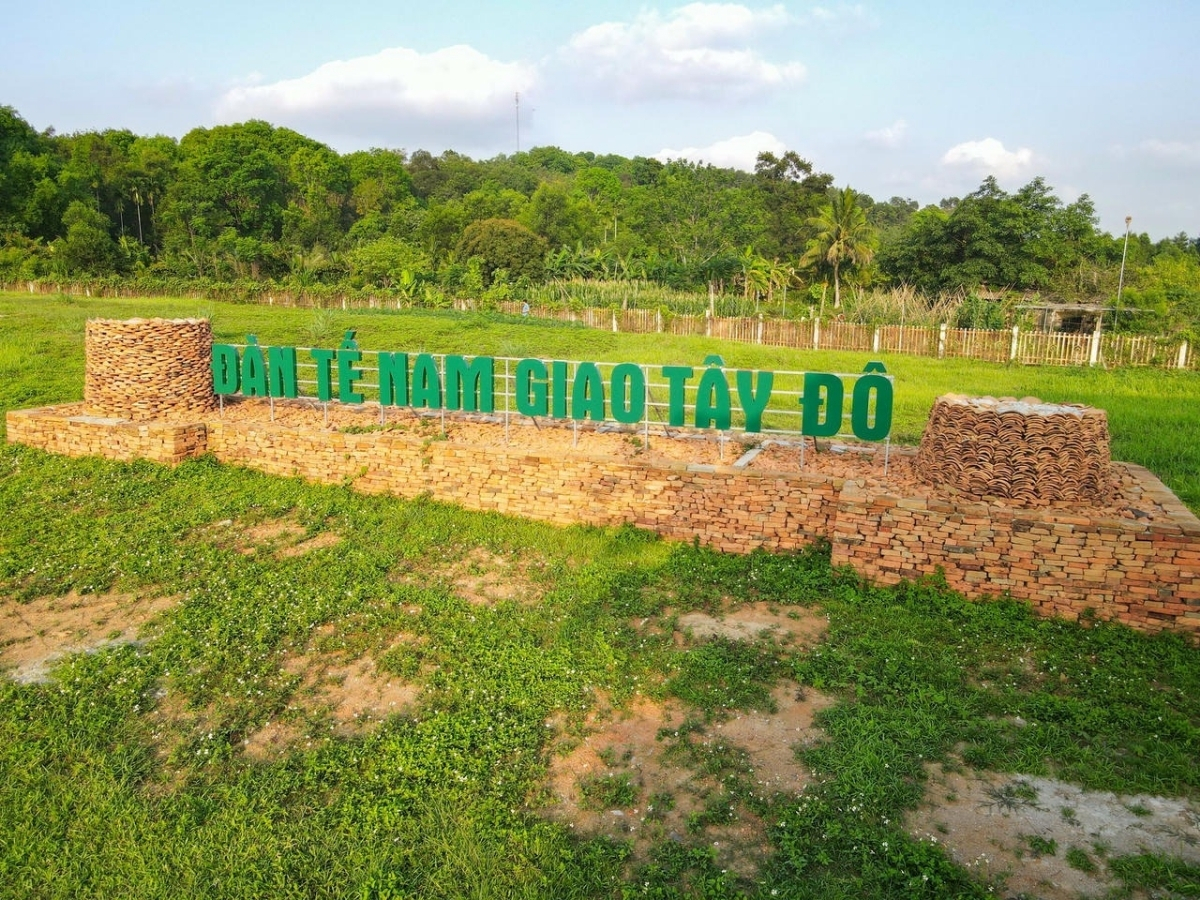
Relic of the Ho Dynasty's Nam Giao Altar is located in Vinh Loc commune. (Source: Collected)
At the end of the journey, visitors will feel an atmosphere like traveling back centuries. Walking on simple village paths, flanked by lush green fields and surrounding mountains, a tranquil space imbued with the essence of the North Central Vietnamese countryside. The tour usually lasts about 1 to 2 hours, but to fully experience the spirit of the ancient Tay Do land, you should combine visiting Ho Citadel and nearby relics in the same trip.
3. Ideal time to explore
The Nam Giao Altar area can be visited at any time of the year, because Thanh Hoa province has a mild climate, each season has its own beauty. In spring, the space around the relic is covered with the fresh green of plants, the air is fresh and pleasant, suitable for leisurely strolls and learning about the history of the Ho Dynasty. In summer, golden sunlight spreads across the ancient stones and moss-covered walls, creating a scene that is both majestic and poetic.

Ho Dynasty's Nam Giao Altar with its structures still intact. (Source: Collected)
In autumn, the dry, cool weather, and the golden ripe rice fields surrounding the heritage site make the picture of La Thanh even more vibrant. Winter brings a quiet, solemn atmosphere, evoking a sacred feeling of a relic that has endured for over six centuries. Regardless of the time of visit, tourists can clearly feel the ancient, peaceful beauty and the enduring historical value of La Thanh – Tay Do in the heart of Thanh Hoa province.
4. Outstanding experiences at the Ho Dynasty's Nam Giao Altar
4.1 Structures and relics
Ho Dynasty's Nam Giao Altar is one of the special architectural works of the Ho Dynasty, clearly reflecting the Eastern worldview and the philosophy of 'round heaven, square earth'. The structure covers an area of over 2 hectares, located at the foot of Mount Don Son (Mount Dun), with a spacious Nam Giao field in front. This is considered a harmonious landform with high feng shui value.
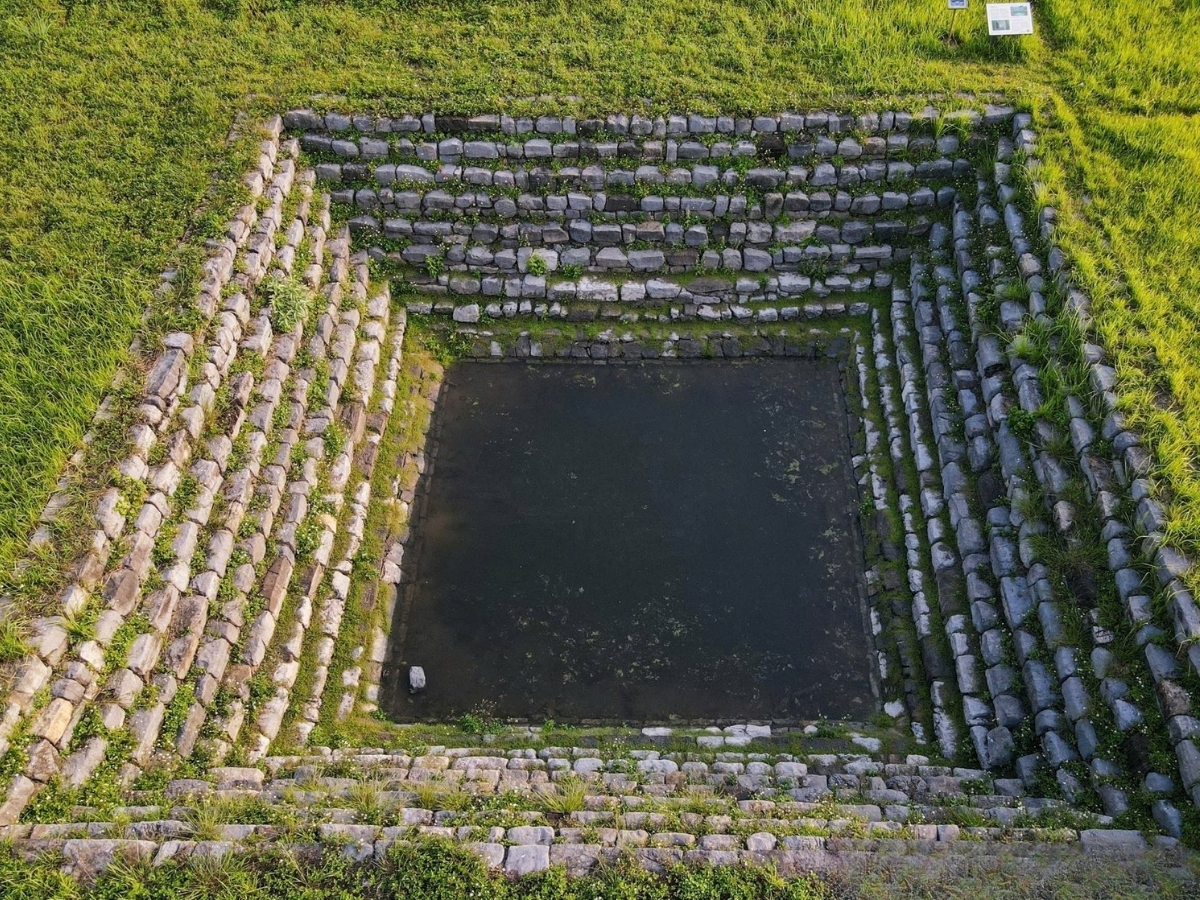
The King's Well structure in the Nam Giao Altar area of the Ho Dynasty. (Source: Collected)
The entire architecture was built according to a three-tiered foundation structure: lower, middle, and upper tiers, gradually narrowing from bottom to top, demonstrating the sacred hierarchy in the ceremony of worshipping heaven and earth. At the highest center is a circular altar, with a diameter of 4.75 m, surrounded by a square stone wall, symbolizing the harmony between heaven and earth. The divine path (or sacred path), paved with smooth blue stone slabs leading directly to the altar, is the path exclusively for the king and his officials to enter and perform rituals on important occasions of the court.
To the left of the divine path is the royal palace area, where the king rested, meditated, and observed abstinence for 7 to 10 days before performing the ceremony. The abstinence demonstrated reverence and purity of body and mind to pray for "favorable weather, earthly advantages, and human harmony," hoping for national peace and popular well-being. Furthermore, within the altar area, archaeologists also discovered the King's Well (also known as Ngu Duc, Ngu Duyen). This is a special structure lined with blue stone, with 9 steps, 5.6 m deep, featuring an outer square and inner round structure. The well is believed to be the source of sacred water serving the ritual bathing and purification for the king before performing the ceremony.

The relic area during excavation. (Source: Collection)
Over more than 15 years of research and excavation with a total area of about 18,000 m², the main structure of the Nam Giao Altar has been clearly identified. The main material is Thanh Hoa green stone, the same type of stone used to build the Ho Citadel. All this creates a solemn, balanced architectural complex, possessing both technical value and the distinct spiritual characteristics of ancient Vietnamese culture.
4.2 The Ho Dynasty's Nam Giao Altar and its historical value
The Ho Dynasty's Nam Giao Altar was where ceremonies to worship heaven and earth were held, the most significant ritual in the concept of governing the nation for Eastern dynasties, aimed at affirming the emperor's divine mandate and praying for favorable weather, peace and prosperity for the nation. Although the Ho dynasty existed for a short period (1400 – 1407), this structure is still considered a typical mark of culture and belief, clearly demonstrating the aspiration to build an independent and prosperous dynasty.

Surrounding scenery of the Ho Dynasty's Dan Nam Giao. (Source: Collection)
From 2004 to the present, four archaeological excavation campaigns at the altar site have yielded many valuable discoveries. Besides architectural materials such as bricks, tiles, and finely carved stones, researchers also found ancient buffalo burials located beneath the outer perimeter wall of the altar, near the foot of Mount Don Son. The buffalo skeleton was placed in a rectangular stone tomb, remaining quite intact after hundreds of years.
Today, the buffalo burial has been restored and preserved in its original location, becoming a vivid testament to the sacred rituals of the ancient Ho Dynasty. Together with Ho Citadel and La Thanh, Dan Nam Giao contributes to completing the overall picture of a unique center of power and belief in Vietnamese history. The structure not only holds archaeological, architectural, and historical value but is also a precious source of spiritual cultural heritage, reflecting the philosophy of life, the universe, and the aspiration for harmony between humans and nature of our ancestors over six centuries ago.
5. Experience and Notes
To ensure a smooth and insightful visit to the Ho Dynasty's Dan Nam Giao, visitors should consider the following notes:
Choose to visit in the early morning or late afternoon to avoid the harsh sun, as the altar area is open with little shade and can be quite hot at midday.
Bring drinking water, hats, and a light jacket to ensure your health during your visit, especially on hot days.
Wear sneakers or flat-soled sandals for convenient movement on the bluestone ground and the sacred path, avoiding slips in humid weather.
Maintain a respectful and serious attitude when visiting; do not climb on the altar steps or ancient structures to protect the relic.
Refrain from speaking loudly, playing, or littering in the sacred area to preserve the solemn atmosphere of the altar.
Take time to learn more at the Ho Citadel heritage site, which displays many archaeological artifacts and valuable documents about the Ho Dynasty, making your trip more meaningful and profound.
6. Combining Tourist Destinations in Thanh Hoa
6.1 Ho Citadel
Only about 2.5 km from the Ho Dynasty's Dan Nam Giao, Ho Citadel is the central structure in the Ho Dynasty's heritage system. Built in 1397, it is the only ancient stone citadel intact in Vietnam, and also one of the largest stone fortresses in Southeast Asia. The citadel walls are over 10 m high, averaging 3.5 m thick, assembled from massive bluestone blocks, some weighing tens of tons, without the need for mortar.
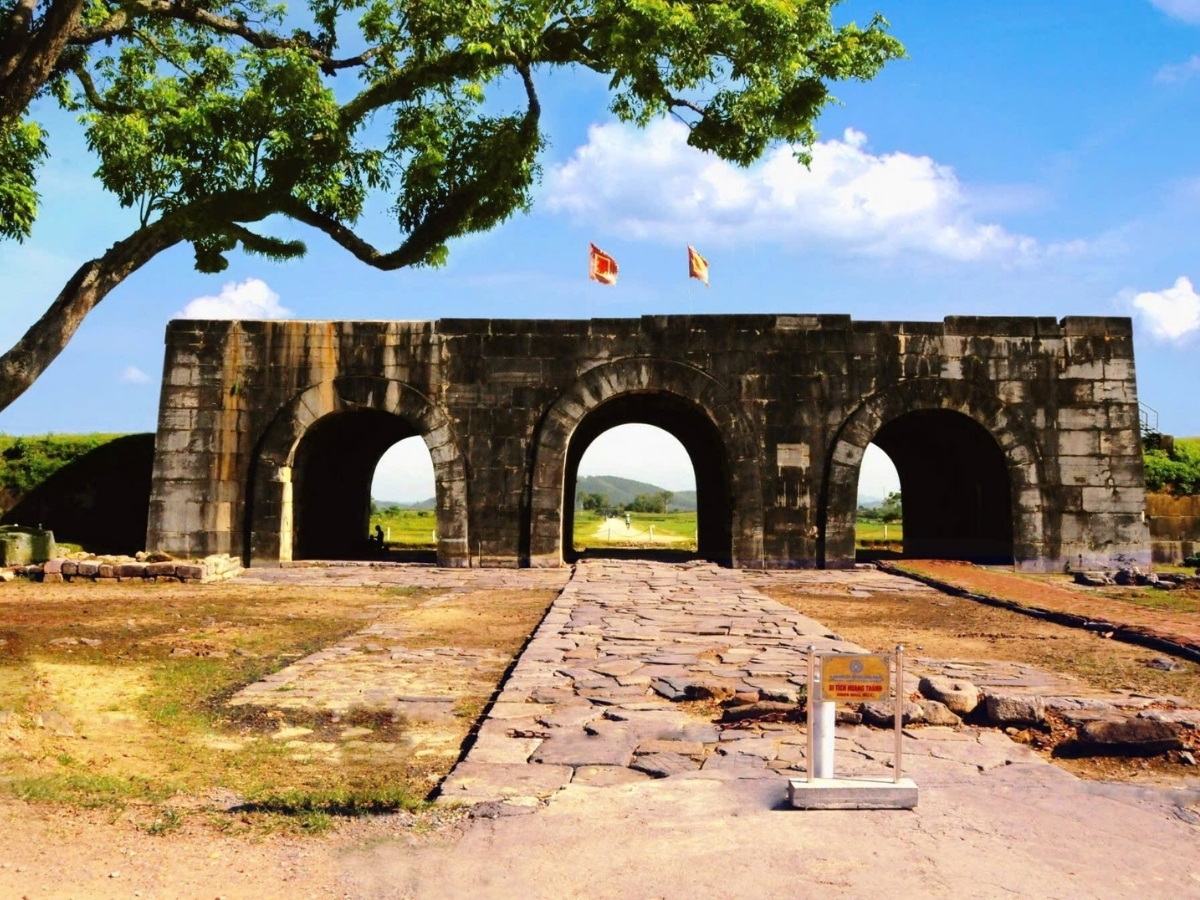
The Ho Dynasty Citadel (Ho Dynasty Citadel) is a UNESCO-recognized historical site. (Source: Collected)
The structure demonstrates superior construction techniques and a rare, large-scale planning mindset in Vietnamese history. During their visit, tourists can clearly feel the solemnity and grandeur of the Dai Ngu (Dai Ngu) capital, while also gaining a deeper understanding of the historical context and reformist vision of Ho Quy Ly. Combining a visit to the Ho Dynasty Citadel (Ho Dynasty Citadel) with the Nam Giao Altar (Nam Giao Altar) helps to present a complete picture of the Ho dynasty.
6.2 Lam Kinh (Lam Kinh) Historical Site
About 35 km from the Ho Dynasty's Nam Giao Altar (Nam Giao Altar), the Lam Kinh (Lam Kinh) historical site in Lam Son (Lam Son) commune is an ancient architectural complex associated with the Later Le dynasty, the birthplace of the Lam Son uprising, and the resting place of 12 Le kings. Amidst the ancient atmosphere, Lam Kinh (Lam Kinh) stands out with the tomb of King Le Thai To, Tien Loan Kieu bridge, Ngoc well, and ancient lim trees providing shade year-round.
Visiting Lam Kinh (Lam Kinh), tourists can immerse themselves in the sacred atmosphere of the site, while offering incense to commemorate the merits of King Le Thai To and the ancestors. This place is a testament to the more than 300-year prosperous period of the Le dynasty, and an ideal stop for those who love exploring Vietnamese history and culture.
6.3 Sam Son (Sam Son) Beach
If you want a change of scenery after trips to heritage sites, tourists can visit Sam Son (Sam Son) Beach, about 60 km east of the Ho Dynasty Citadel. As one of the most beautiful and famous beaches in the North, Sam Son (Sam Son) is charming with its long stretch of fine sand, gentle waves, and clear blue water year-round. Not only is it an ideal resort destination, but it also attracts tourists with its vibrant community life and distinctive coastal culture.
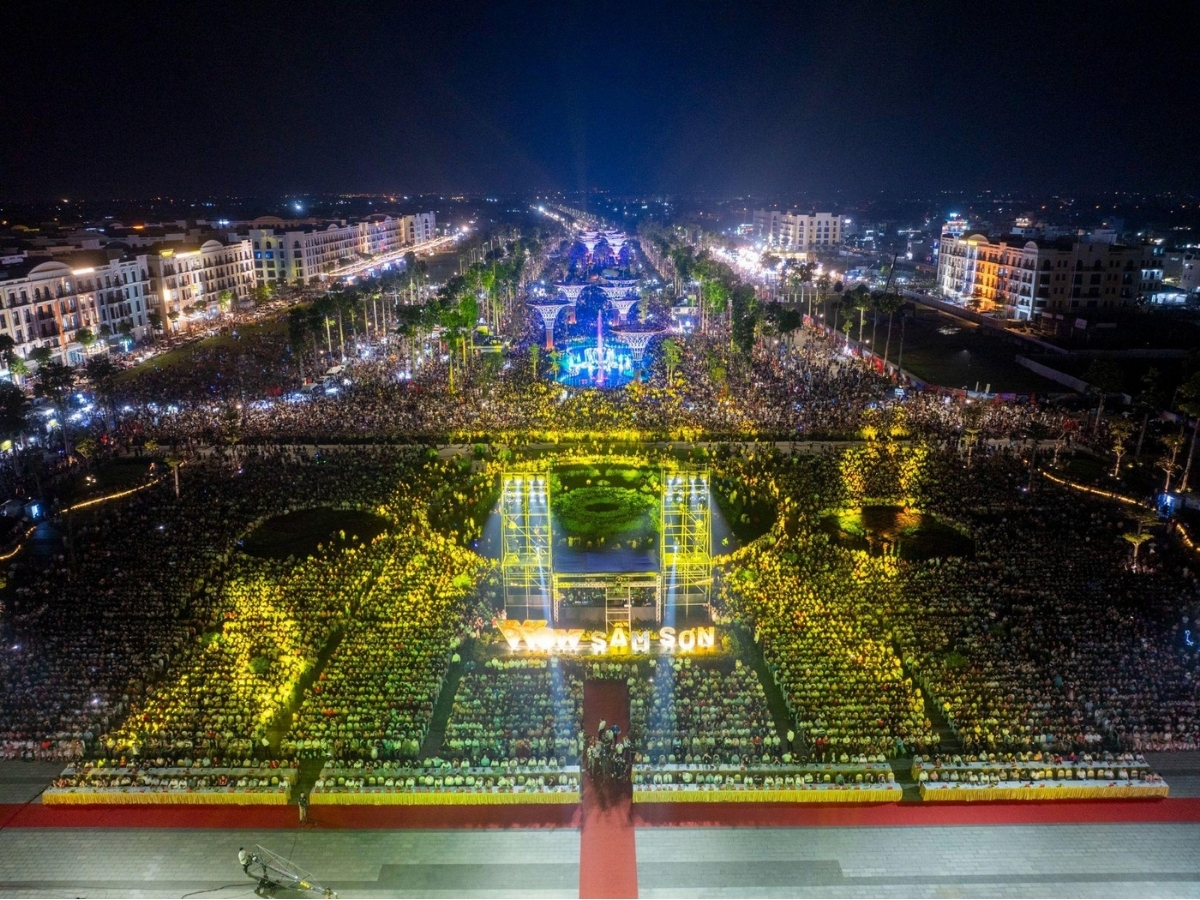
Sam Son Beach Square during the opening of the beach tourism season. (Source: Collection)
A prominent modern highlight in the coastal city is the Sam Son Beach Square. The spacious square, with its modern design, is a frequent venue for festivals, cultural and artistic events, and entertainment activities for locals and tourists. As night falls, brilliant lights, a free water music show using German technology with 300 jets, and a synchronized sound and lighting system create a vibrant, sparkling scene in the heart of the coastal city.
The Ho Dynasty's Nam Giao Altar is not only a historical relic but also a bridge connecting you to the glorious past of the Vietnamese nation in the medieval period. Come to feel the sacred spiritual energy and discover the precious cultural values that our ancestors have preserved!


